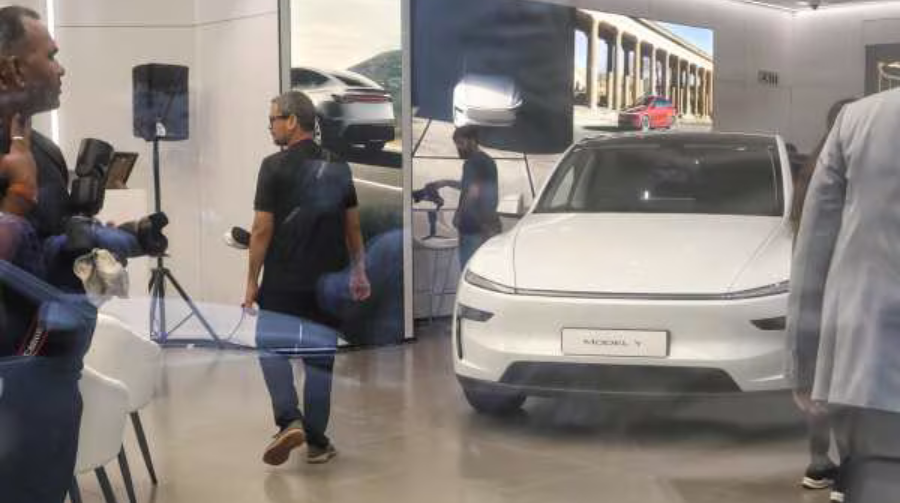Reviews
Tesla Announces Model Y Pricing for India: But Why Is the EV Giant’s Entry So Slow
After years of speculation and endless anticipation, Tesla has officially announced the pricing for its popular Model Y in India.
While this marks an important milestone for the EV giant, it also brings attention to Tesla’s unusually slow approach to entering one of the world’s fastest-growing automotive markets.
What’s holding back the world’s most popular electric carmaker? Let’s dive in.

Tesla’s Announcement: Model Y India Pricing Revealed
Tesla has priced the Model Y at ₹70 lakh to ₹85 lakh (ex-showroom), depending on the variant and customizations.
Key highlights:
- The standard range model is expected to start around ₹70 lakh.
- The long-range and performance variants may go up to ₹85 lakh or more.
- Bookings are expected to open later this year, with deliveries starting in limited cities by mid-2025.
Though it is a luxury price point, Tesla fans in India have been eagerly waiting to finally get their hands on the brand.
Expected Features and Variants in India
The Indian version of the Model Y is expected to include:
- All-electric range of up to 533 km (as per global WLTP standards).
- Tesla’s signature Autopilot and advanced driver assistance features.
- 15-inch touchscreen interface with over-the-air updates.
- All-wheel drive on higher variants.
- Minimalist interior and panoramic glass roof.
Tesla will initially bring vehicles as fully imported (CBU) units, which means higher taxes and duties contribute to the high price.
Why Has Tesla Taken So Long to Enter India?
Despite years of hype, Tesla’s India debut has been repeatedly delayed. Key reasons include:
- High import duties, making Tesla cars nearly double the price compared to the US or Europe.
- Lack of a strong EV charging infrastructure.
- Policy uncertainties around local manufacturing and taxation.
- Concerns over service and spare parts availability in India.
Elon Musk has often tweeted about India’s high tariff barriers, calling them among the highest in the world.
Challenges Tesla Faces in the Indian Market
Some major hurdles for Tesla include:
- Affordability barrier: Even at ₹70 lakh, the Model Y remains out of reach for most consumers in a price-sensitive market.
- Infrastructure gaps: Limited fast-charging stations and service centers, especially outside metros.
- Local competition: Strong push from brands like Tata, Mahindra, and BYD with more affordable EV options.
- Regulatory roadblocks: Unclear incentives and slow approval processes have discouraged Tesla from faster entry.
Local Manufacturing vs. Import: The Ongoing Debate
Tesla has insisted on reducing import duties before committing to setting up a local factory. Meanwhile, the Indian government has been encouraging Tesla to build manufacturing facilities under the Make in India initiative.
While talks have been ongoing, no firm agreement has been reached.
Local manufacturing would:
- Help reduce costs by up to 30–40%.
- Create jobs and boost local supplier networks.
- Enable Tesla to qualify for government EV incentives.
However, the high initial investment and the uncertainty of demand have kept Tesla cautious.
Government Policies and EV Infrastructure
India aims for 30% EV penetration by 2030, but:
- Charging stations are still concentrated in a few urban pockets.
- Government subsidies and FAME II incentives mostly focus on two-wheelers and affordable EVs.
Tesla’s luxury positioning and lack of local production make it less eligible for these subsidies, further complicating its rollout strategy.
Impact on India’s EV Ecosystem
Despite challenges, Tesla’s entry is significant because:
- It elevates India’s image as an emerging EV market on the global stage.
- Forces local manufacturers to innovate and improve technology standards.
- Attracts other premium global EV brands to consider India seriously.
Moreover, the hype around Tesla indirectly accelerates consumer interest in electric mobility overall.
Consumer Response and Market Expectations
While Tesla has a cult following among tech enthusiasts and the affluent segment, broader adoption will depend on:
- Price reductions through local assembly.
- Expansion of supercharging networks.
- Reliable after-sales service and spare part availability.
Many potential buyers are adopting a “wait and watch” approach to see how Tesla resolves these issues before committing.
Conclusion
Tesla’s announcement of Model Y pricing in India is a historic step, but the journey is far from over.
As Tesla navigates high tariffs, infrastructural hurdles, and policy ambiguities, its future in India remains both promising and uncertain.
The Model Y’s arrival marks the beginning of what could be a new chapter in India’s EV story — if Tesla can adapt to this uniquely challenging yet potentially rewarding market.